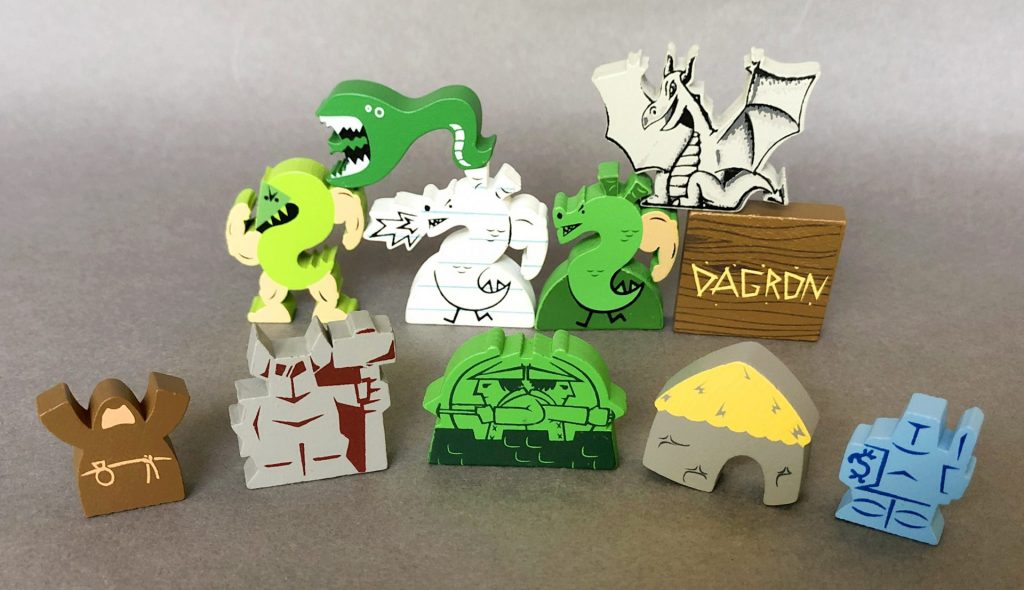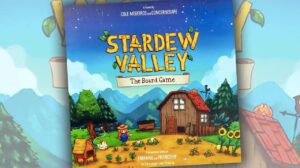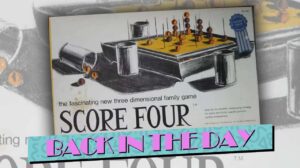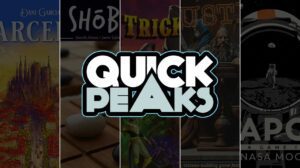Nostalgic Prelude
Back in the early 2000s, Mike and Craig Chapman — The Brothers Chap to their fans — created one of the first viral internet sensations, HomestarRunner.com. Storylines, such as they were, mainly centered around the site’s most popular feature, Strong Bad Emails. Readers would send in questions and Strong Bad’s responses would spiral off into wonderfully bizarre tangents.
In one such email (SB Email #58), a fan asked Strong Bad to draw a dragon. From this simple request, the legend of Trogdor the Burninator was born, complete with sung backstory and Trogdor’s love for Burninating peasants and thatched-roof houses.

The Brothers Chap’s new character was so popular that they created an online Trogdor video game (still available in its original Flash and an updated HTML5 version). In the game Trogdor tried to stomp on Peasants while avoiding being Sworded by blue knights or Arrowed by an archer.

Fast forward through marriages, kids, and careers in mainstream animation, and over a decade later The Brothers Chap went to work with designer James Ernest (of Cheapass Games) to create Trogdor!! The Board Game. When it launched on Kickstarter, it surpassed its goal of $75,000 in just under three hours and by the end of the KS run, it had reached nearly 20 times the initial goal.
However, nostalgia for consummate V’s only goes so far. Is the game any good?
Trogdor the Game
Following along with the video game, Trogdor is trying to Burninate the land –in this case, the game board, represented by 25 two-sided cardboard tiles. There are also three thatched-roof cottages to Burninate and two blue knights and an archer who are trying to stop Trogdor and save their village.

Trogdor’s health is measured in Peasants. Three Peasants start on the main board, one beside each cottage, and four start on the Trog-Meter. If Trogdor stomps on a Peasant, they go onto the Trog-Meter as increased health.
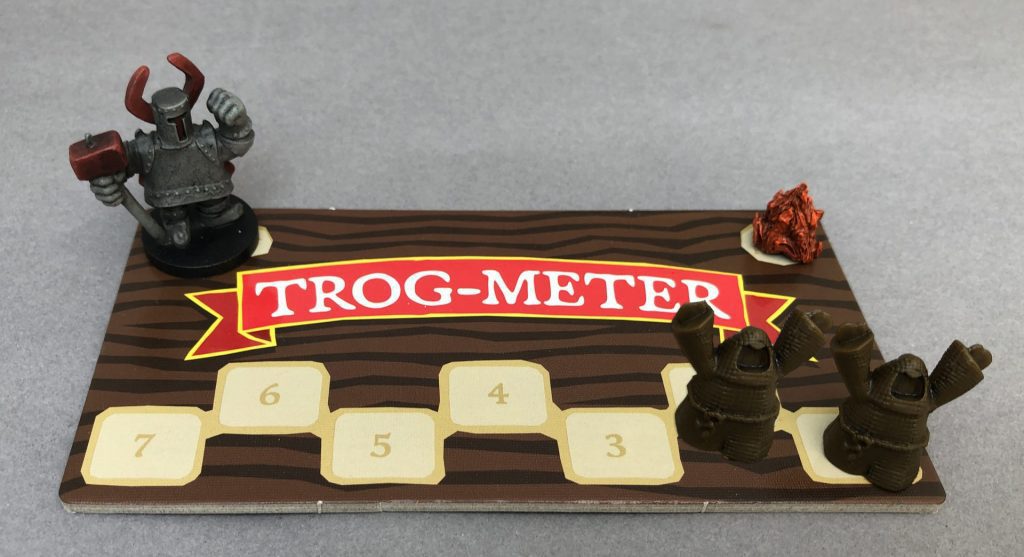
When Trogdor takes damage, a Peasant is moved from the Trog-Meter to The Void and is removed from the game.

Each player starts with a Keeper card that gives them a special role and power throughout the game…
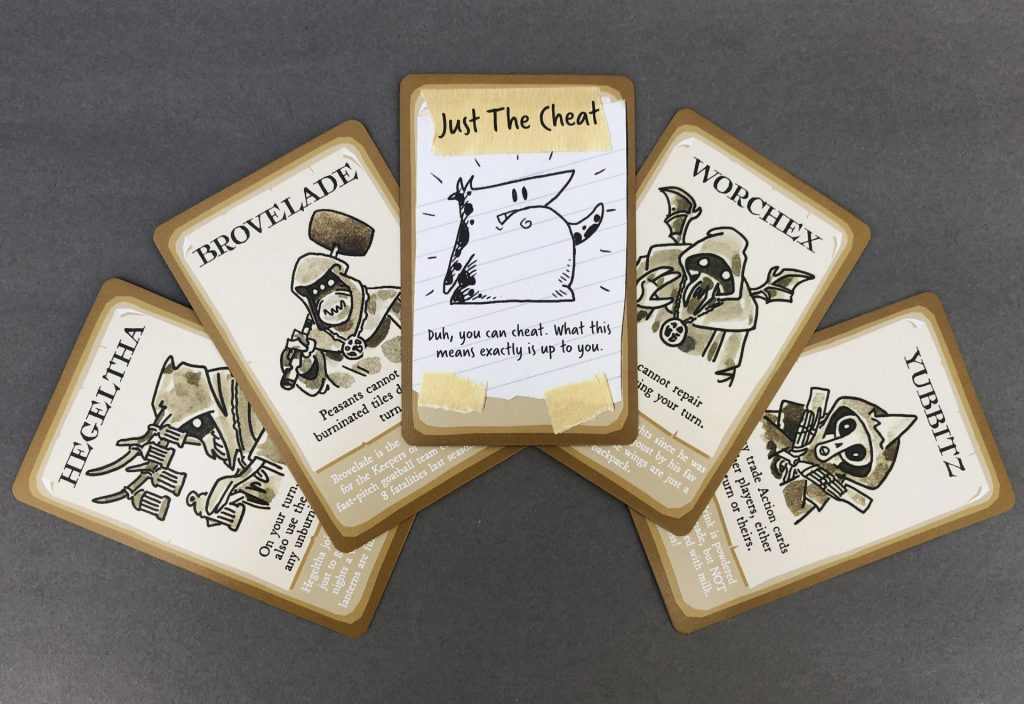
and an Item card whose power can be used once and then recharged through a specific action.
They also start with an initial Action card. On a turn, players draw another Action card and decide which of their two Action cards they will use to help Trogdor Burninate the village.

Action cards define the number of actions you may take and any extra movements or abilities allowed. For instance, moving to a new tile is one action while Burninating that tile is a second action.. Trogdor can, typically, only take 4 actions per turn and can only move orthogonally, and can only Burninate the tile they occupy. Specific action cards allow for additional actions, diagonal movement, and/or long-range Burninating.
After Trogdor moves, the player draws a Movement card. Movement cards determine both Peasant and Blue Knight/Archer movement. Movement cards determine how many Peasants must be on the board and how they will move in both direction and number of spaces. If a Movement card calls for more Peasants than are currently on the board, Peasants must be removed from the Trog-Meter to reach that number, meaning less health for our hero. Movement cards also dictate whether Peasants “unBurninate” the tile they stop on.
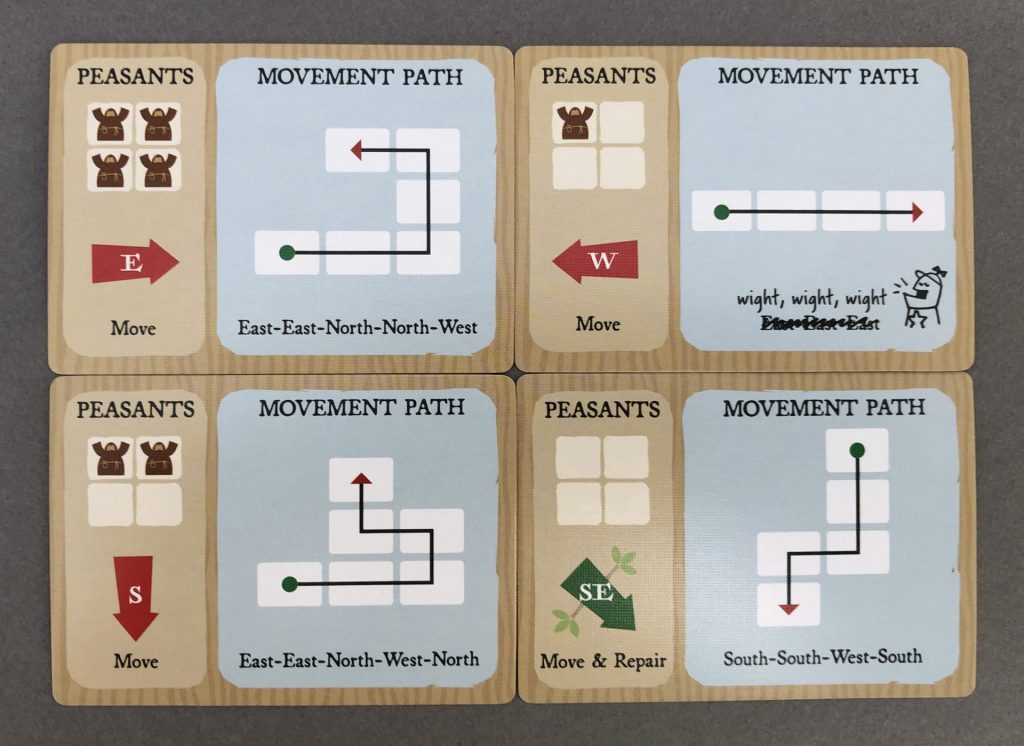
The second part of a Movement card shows how the Blue Knights and the Archer will move. While Peasants move only one square in a given direction, the Knights and Archer move four or more squares in a number of different directions. Should a Knight pass through or end its Movement on the same tile as Trogdor, Trogdor takes a point of damage. Should a Knight pass through or end on a tile with a Burninated Cottage, the Cottage is repaired.
The Archer follows the same movement path as the Knights. At the end of his Movement, he shoots in either North/South or East/West, based on his last movement. If Trogdor is anywhere along that path, he takes a point of damage.
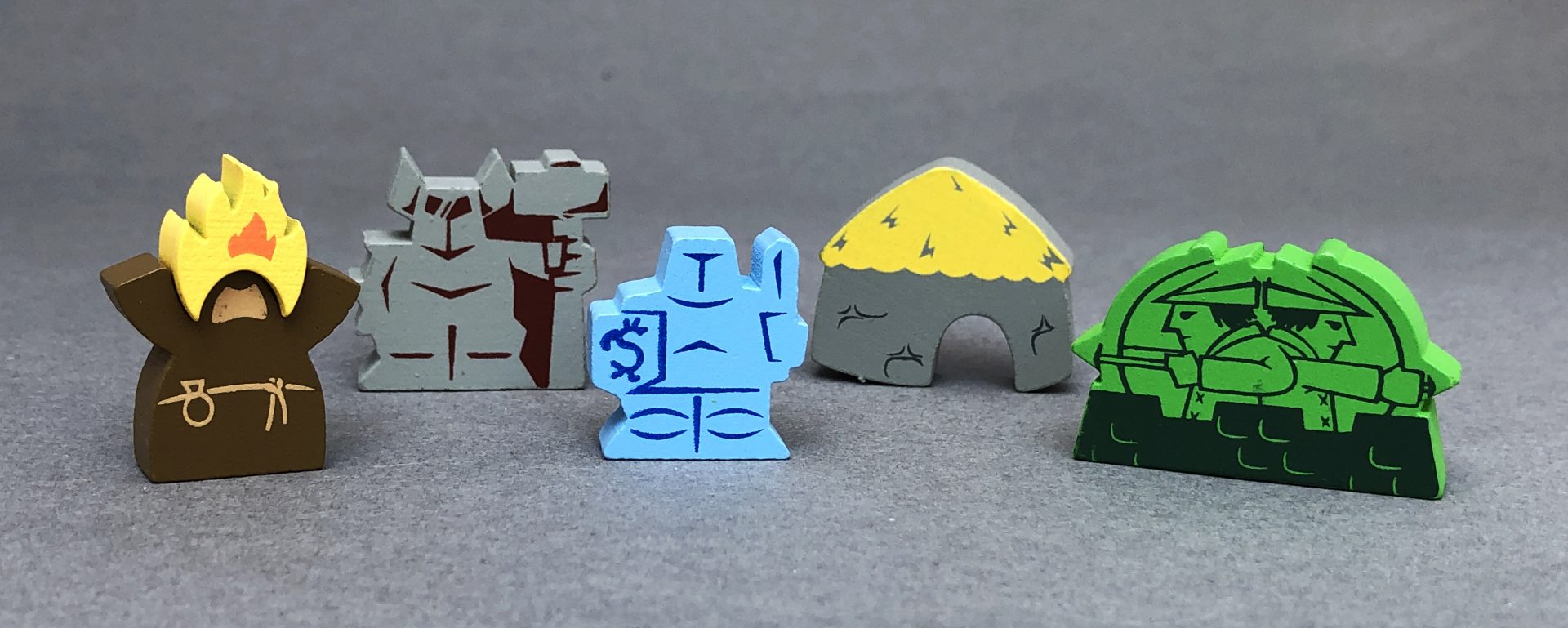
To make an already difficult game even harder, the first time Trogdor takes damage, a third, even more powerful knight named Troghammer enters the game and seven Troghammer cards get shuffled into the Action deck. At the end of a turn, Troghammer follows the same Movement rules as the Blue Knights and Archer.

However, if players start their turn by drawing a Troghammer card from the Action deck, they must immediately draw a Movement card and move Troghammer (ignoring all other possible movement on the card. Not only is it possible for players to draw multiple Troghammer cards in a given turn, but if Troghammer ends his Movement phase on a tile already occupied by a Blue Knight or the Archer, players must draw another Movement card and move him again.
To win, Trogdor must Burninate all 25 tiles, all three Cottages, and all Peasants must be cleared from board. Trogdor must also have at least one hit point left on the Trog-Meter.
But Is Trogdor Fun?
HomestarRunner.com was a clever and lighthearted site and there are elements of that same discerning humor within the game. For instance, if you choose to Burninate a Peasant, the Peasant dons a flaming helmet. You then draw a Movement card and move the Peasant across the indicated tiles, Burninating each tile the Peasant land on. As well, should Trogdor lose, he doesn’t really lose – not right away, at least. See, Trogdor doesn’t like losing. So, instead, Trogdor Rage Quits. Players draw five Movement cards and move Trogdor in each of the directions indicated, one Movement card at a time, Burninating tiles, Cottages, and Peasants just by walking over them. If he manages to Burninate all of the tiles and cottages and removes all of the Peasants, he still wins the game.
The work that went into the board tiles and game pieces is impressive. The cards are coated linen cardstock and vary in size to help tell the different card types apart. The original artwork is different for each tile and all of the wooden meeples that came with the base Kickstarter set are each nicely painted. In addition, there are many different Trogdor meeples to choose from, each based on renderings drawn by other characters in the same Homestar Runner episode that introduces Trogdor.
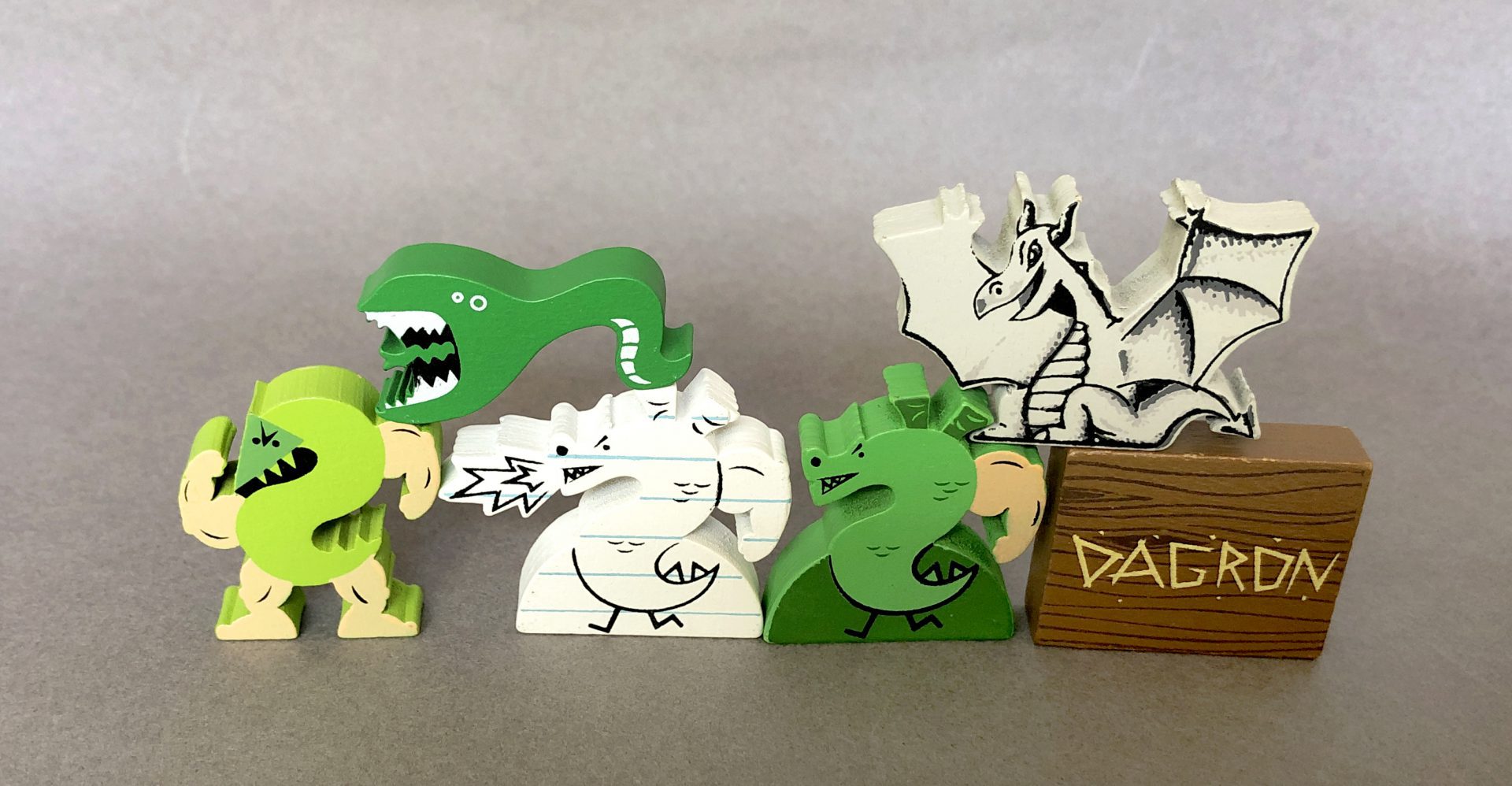
The Kickstarter Burninator level included some of the best hand-painted miniatures for a game in that price range that I’ve seen. They are detailed, vibrant, and make the game that much more fun to play.
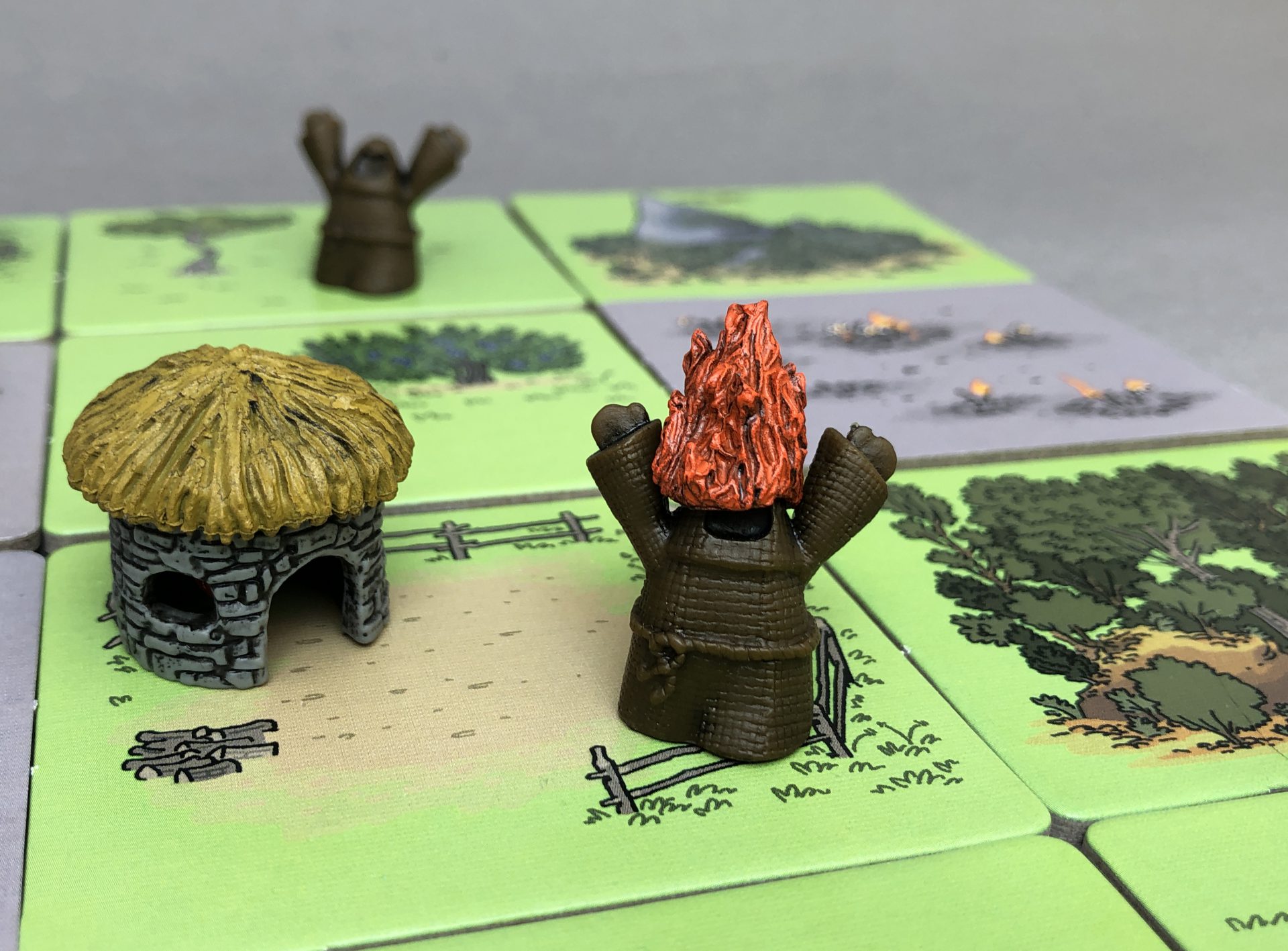
While the game’s core appeal is to fans of HomestarRunner.com, prior knowledge of the site and its characters is not essential to either playing or enjoying the game. It would definitely help players understand the references and the language – one player in my weekly group, who was not Homestar-literate, seemed confused by the joy the rest of us had saying “Burninate”, “Sworded”, and “Arrowed!”) But like any game it’s introducing a new theme and setting, providing its own rules and logic.
The decision to make Trogdor!! The Board Game a cooperative game was a smart one. Trogdor was a well-loved character in the Homestar Runner universe, and focusing the game on helping him to Burninate tiles and cottages, while stomping on Peasants, makes for an enjoyable time.
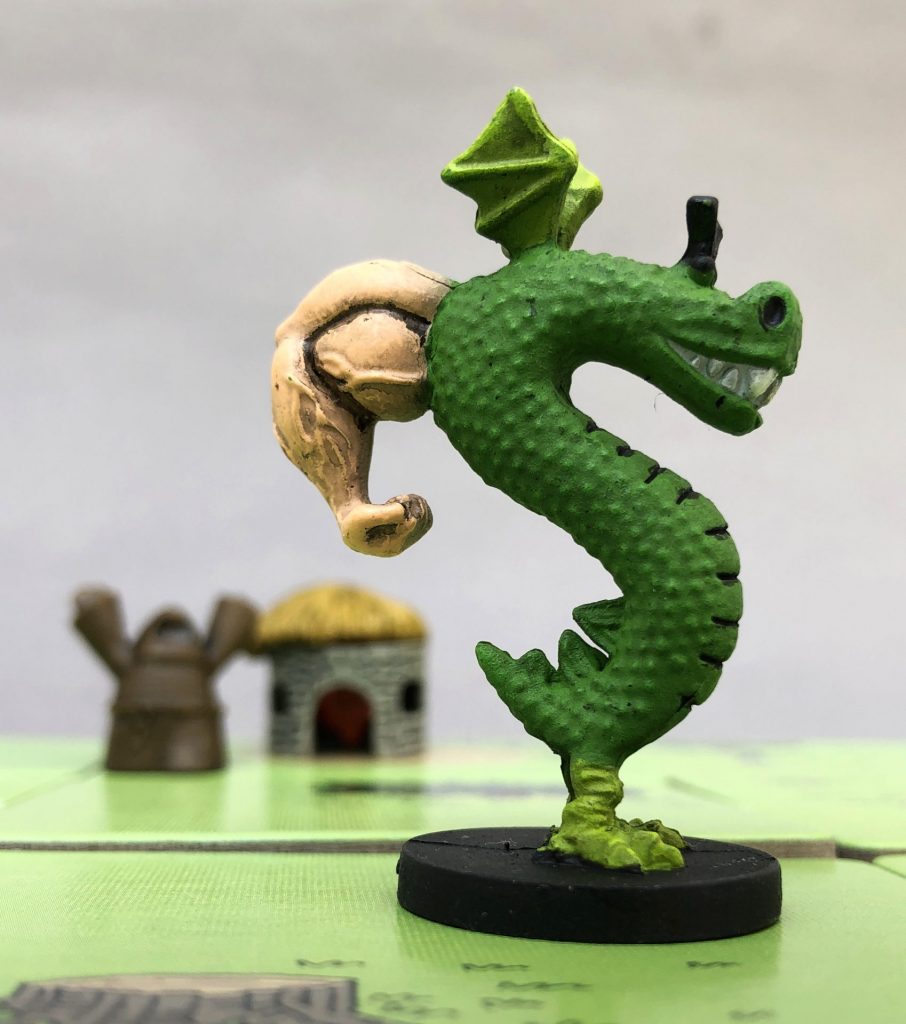
I’m a big fan of co-op games, but feared Trogdor!! The Boardgame would be a lackluster game that banked on fan loyalty at the expense of its gameplay. Happily, this is not the case. Trogdor is a well-designed game that immediately impressed my gaming group with how much thought and consideration went into the end product.
Several games started off very badly for us, leading to fears of a quick end to Trogdor. Each of those games became enjoyable struggles, with all of us working together to solve the puzzle that the game presents. There are just enough elements to give players the feeling that there is still a fighting chance to stay in the game. Winning is difficult, but has never felt completely out of reach. This fine balance is what makes a good co-op game, and as consummate as the Vs of the teeth, spinities, and angry eyebrows, Trogdor Burninates that balance.
Trogdor The Burninator is a fun co-op that takes its characters lightly, but takes its gameplay seriously.




